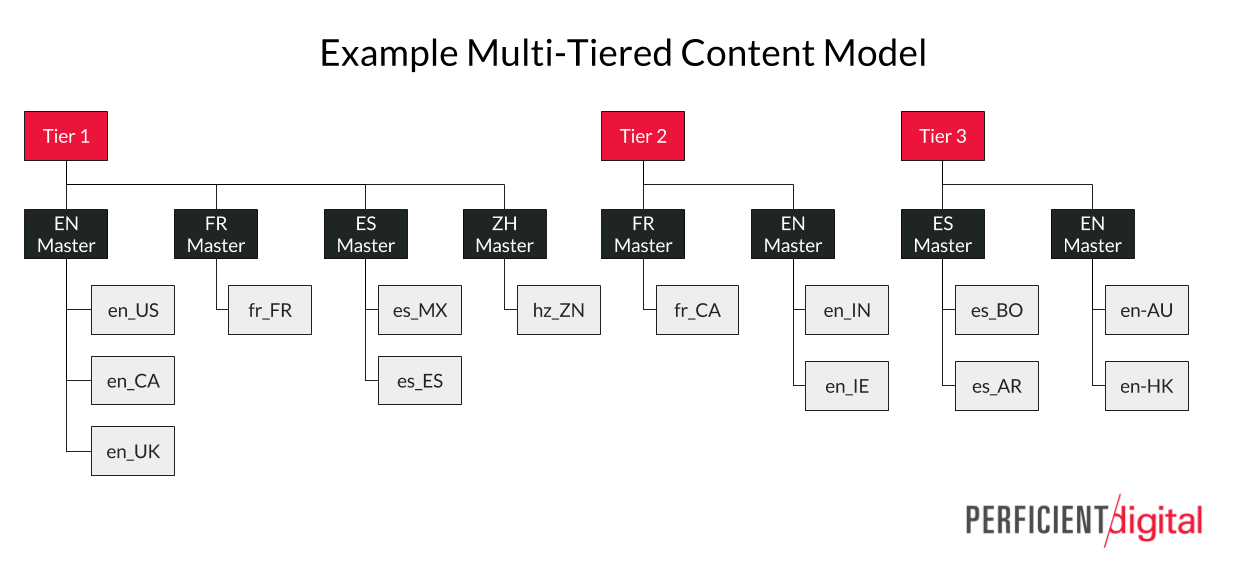Implementing Experience Management solutions for global organizations involves particular challenges. The complexity of maintenance and cost of translating a large content repository increases several-fold when it must be reproduced across multiple regions and languages.
Most organizations take one of two approaches to supporting multi-lingual content.
- Translate Everything
- Decentralized Translations
To understand what’s is the best approach for a solution, let’s understand each the costs and benefits of each approach.

Translate Everything
This approach relies on centralizing the governance and management of content. It uses a content master which is translated mostly or completely verbatim to multiple languages. This approach best fits organizations with strong central governance and systems.
Translating from a content master makes it significantly easier to keep content in sync and present a constant brand and voice, but it comes at a cost. Centralizing governance removes the flexibility and autonomy from regional teams and authors.

Decentralized Translations
Organizations with strong regional teams may prefer to decentralize the process of maintaining and translating content. The level of decentralization depends on the use case, but this can range from completely separate to using told like AEM’s Language Copy to synchronize the structure if not the exact content.
This gives the regional teams significantly more authority to craft their message and voice. However, it is at the cost of making content synchronization and making a unified brand voice significantly more difficult.

Meeting in the Middle: Multi-Tiered Content Strategy
The extremes work well for some organizations, but if you have limited resources or are somewhere in the middle of centralized and decentralized, what strategy is going to work for you?
Follow the 80 / 20 rule. Most organizations have certain regions or languages which represent the bulk of their business or it’s focus. By prioritizing the time and cost of translating and managing these regions, you can maximize your return on investment and ensure that regional sites don’t get stale without a sufficient team to maintain a large content set.
Defining a Multi-Tiered Content Strategy
The starting point for defining a Multi-Tier Content Strategy is doing the content analysis creating an Information Architecture. This will define the structure of the content and show commonalities between content collections. From here, there are usually patterns that emerge where different regional sites will fit into 3 – 4 tiers by size and focus.
From there, the IA and Content Strategy team should work to define the contents for each tier using a bottom-up approach. They should define the minimum content required first and then the additional content added in each tier. This allows for identifying the shared content between each tier and helps the business get clarity around what content needs to be where.
In the below example diagram, the largest sites (Tier 1) would contain the full set of the content, the medium sites (Tier 2) would contain some product summary content and shared content and microsites (Tier 3) would just contain the shared content.

From there, the technical team can take this strategy and implement it into your Experience Management platform, for example in Adobe Experience Manager using Language Copies and Live Copies.
Choosing the Right Strategy
So how do you know what is the right strategy for your organization? The right approach will depend on your organization’s structure and the nature of the solution you are trying to implement. Perficient/Digital‘s Content Management and Content Strategy experts can provide expert guidance in the right strategy for your particular situation.

